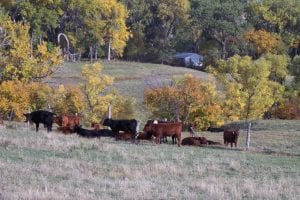By Sandy Johnson, extension beef specialist, Colby, KS
From time to time, you hear through the grapevine that someone’s herd had an unusually high number of open cows at fall preg check time. That is when you wipe your brow and say “glad that didn’t happen to my herd”! In some cases, the poor reproductive response is isolated to a particular pasture, bull or age/management group and the origin of the problem may be easier to find. If not, the search for an answer will take longer and will be helped by accurate and complete records, and sometimes diagnostic testing. What follows highlights some of the starting points for troubleshooting. Continue reading “Tally Time – Troubleshooting Poor Pregnancy Rates”
 by
by  K-State to host seven events around Kansas.
K-State to host seven events around Kansas.